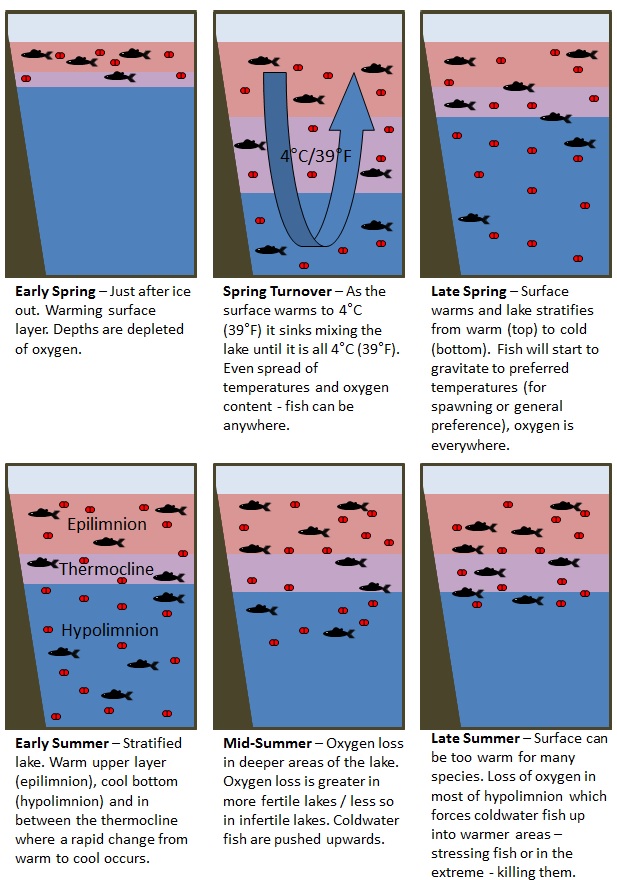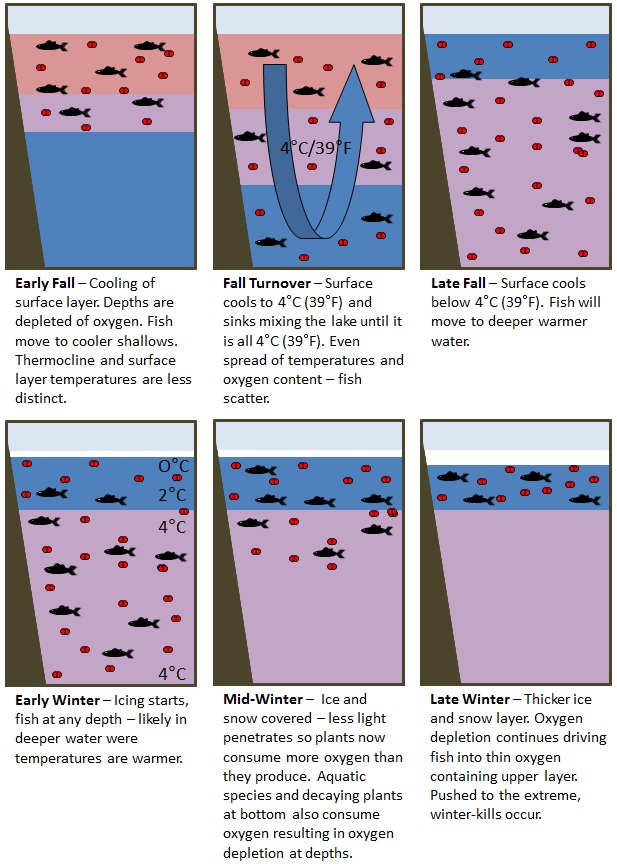In a recent post I talked about the various types of lakes based on their mixing classification. An understanding of the type of lake you are fishing on can give you a good indication of the depths where fish may be located at a particular time of year. In addition to preferred temperature for differing fish, the presence or absence of oxygen in the water plays a key role in where fish will move to. Fish will gravitate to areas that most closely satisfy both temperature and oxygen needs. The images below show a possible scenario for a moderately fertile, temperate zone, dimictic lake – a common type found in temperate areas such as Ontario. As mentioned in a previous post a dimitic lake will have turnovers in both spring and fall.
Fish will gravitate to areas that most closely satisfy both temperature and oxygen needs.
A number of factors can change the situations above – both locally and lake-wide. For example:
- Cooler temperature and oxygen rich areas such as at inflows of rivers and creeks
- Power plants warm water discharge areas – warm zones
- Underwater springs – cool spots in summer, can be magnets for fish during hot periods
- In less fertile lakes oxygen levels will remain more constant allowing fish to remain deeper
- In more fertile lakes oxygen loss will be a major factor, large algae blooms can severely diminish oxygen levels (dead zones within the lake)




